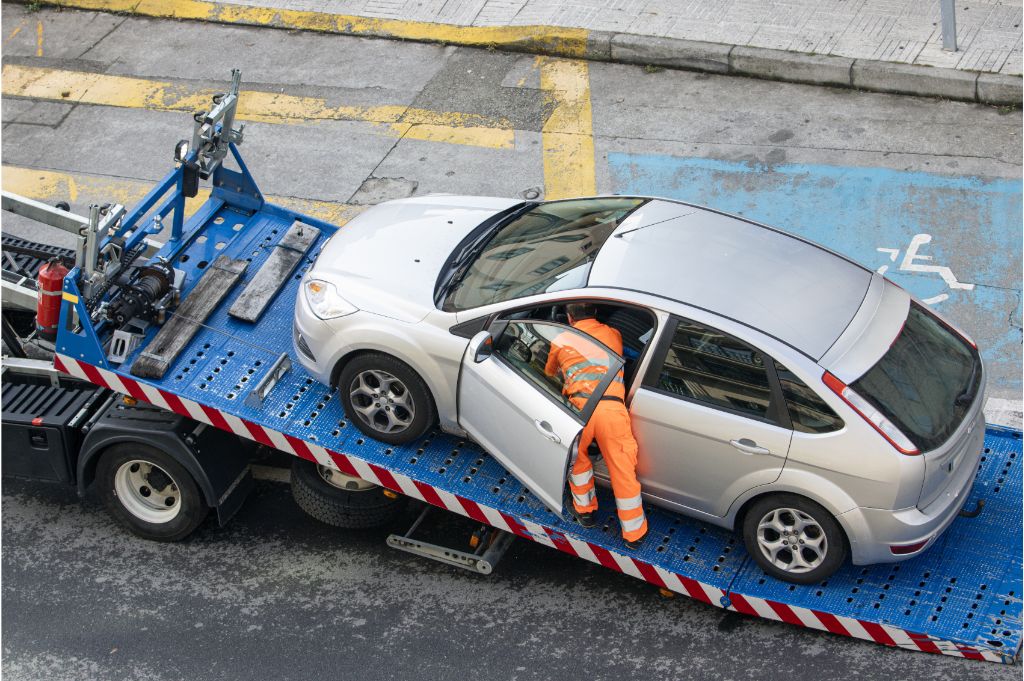
Common Roadside Emergencies – G-Man Towing
Road trips and daily commutes can suddenly turn stressful due to common roadside emergencies. Knowing what to do can make all the difference, whether it’s a flat tire or an engine overheating. This blog will walk you through some of these emergencies and offer practical tips on handling them efficiently.
Understanding Common Roadside Emergencies
Flat Tire
Flat tires are among the most common roadside emergencies that can catch any driver off guard. These mishaps can occur for various reasons, including sharp objects on the road, potholes, or simple wear and tear over time. If you suddenly find your vehicle with a deflated tire, here are some easy steps to get you back on the road:
- Prioritize Safety: The first and foremost is to pull over to a safe location, preferably away from the traffic flow. Turn on your hazard lights to indicate to other drivers that you’re experiencing a problem.
- Assess the Situation: Get out of the vehicle (if it’s safe) and inspect the damage. Is the tire completely flat or just losing air pressure?
- Gather Your Tools: Once you’ve identified a flat tire as the issue, gather your vehicle’s spare tire and the car jack and wrench, usually found in the trunk.
- Replace the Tire: Begin by loosening the lug nuts with your wrench (but don’t remove them entirely yet). Next, use the car jack to raise the vehicle off the ground. Once the car is safely elevated, you can remove the lug nuts and, subsequently, the flat tire.
- Install the Spare Tire: Position the spare tire on the wheel hub and hand-tighten the lug nuts as much as possible. Lower the car back to the ground using the car jack, then tighten the lug nuts further using the wrench.
- Check Tire Pressure: If possible, check the tire pressure of the spare tire to ensure it’s safe to drive on.
If you feel uncomfortable changing the tire, don’t hesitate to contact a Grand Prairie roadside assistance. They can help you with common roadside emergencies swiftly and efficiently.
Engine Overheating
Engine overheating is a common roadside emergency that can be distressing. It usually occurs due to a faulty cooling system or low coolant levels. Here’s what you should know to handle it effectively:
Spot the Signs
When your engine overheats, steam usually billows from under the hood. Another sign is a sudden spike in your temperature gauge. These are cues to pull over immediately.
Stay Safe
Prioritize safety! Pull to the roadside and switch off the engine. Let it cool for a minimum of 15 minutes. Avoid opening the hood until the engine cools to prevent burns.
Check and Refill Coolant
Check the coolant level in the reservoir once the engine has cooled down. If it’s low, refill it. Here’s a simple step-by-step guide:
- Slowly remove the coolant reservoir cap to release any pressure.
- Fill the reservoir to the ‘Full’ line with coolant.
- Return the cap securely.
Remember, prevention is better than cure. Regular checks of your cooling system can help avoid this common roadside emergency. But, if engine overheating becomes a persistent problem, it’s time to seek professional help.
Out of Gas
Running out of gas is among the most common roadside emergencies. When your gas gauge is nearing empty, do not panic. Here’s a step-by-step guide to managing this situation:
- Keep Calm: Stay calm and turn on your hazard lights. This will signal other drivers to proceed with caution.
- Pull Over Safely: Try to coast along the shoulder of the road and park your car safe from the traffic.
- Assess Your Surroundings: Determine your exact location. Use landmarks or GPS coordinates to help.
- Call for Assistance: Now’s the time for roadside assistance. Make sure to provide your precise location for a swift response.
- Stay with Your Vehicle: Unless you’re in immediate danger, staying with your vehicle until help arrives is best.
- Prevention is Better than Cure: To avoid finding yourself out of gas in the future, always keep an eye on your fuel gauge, especially before long trips. A good rule of thumb is to refill your tank once it hits the quarter mark.
Running out of gas can be frustrating, but with the proper steps and with the help of roadside assistance, you’ll be back on the road in no time.
Dead Battery
Regarding common roadside emergencies, few things are as startling as a dead battery. Often, you won’t see it coming, and there’s never a good time for your car to refuse to start.
Identifying a Dead Battery
First things first, how do you know your battery is dead? If you turn the ignition key and hear a clicking sound, or the engine tries to start slowly and then fails, chances are you’re dealing with a dead battery. The interior lights in your car may also be dim or non-existent, another strong hint towards a battery issue.
Jump-Starting Your Vehicle
Don’t panic. There’s a quick solution you can try: jump-starting your car. You’ll need a pair of jumper cables and a second vehicle with a healthy battery. Here’s a simplified process:
- Park both cars close but not touching, and shut off their engines.
- Affix one side of the red (positive) jumper cable to the positive node of the drained battery.
- Link the opposite end of the red jumper cable to the positive connector of the functioning battery.
- Attach one side of the black (negative) jumper cable to the negative connector of the functioning battery.
- Fasten the other side of the black jumper cable to an uncoated metallic area in the car with the dead battery (this serves as a ground).
- First, initiate the operational vehicle’s engine, and then attempt to start the vehicle with the dead battery.
When to Seek Professional Help
If jump-starting doesn’t work or you’re uncomfortable performing these steps, it’s time to seek professional help. Contacting a trusted roadside assistance service can save the day. They’ll have the tools and expertise to handle your dead battery situation safely. They can even transport your vehicle to a nearby service station for a battery replacement if needed.
Preventive Measures for Common Roadside Emergencies
Regular vehicle maintenance and check-ups are among the best ways to avoid common roadside emergencies. You should also keep an emergency kit with essential tools such as a spare tire, jack, wrench, jumper cables, and extra coolant in the vehicle.
Learning basic vehicle troubleshooting, such as changing a tire or jump-starting a car, can be incredibly helpful. Yet, when the situation is too complex or dangerous, it’s crucial to have professionals like towing services step in.
How a Professional Towing Company Can Help During Roadside Emergencies
A professional towing company can be a lifeline when common roadside emergencies occur. They offer roadside assistance, lockout services, and emergency towing, providing swift solutions.
Hiring a professional towing service not only ensures safety but also saves time. When choosing a towing company, look for experience, reliability, and positive customer feedback.
Takeaway
From flat tires to engine overheating, understanding common roadside emergencies is vital. Remember, the key is not to panic. Regular maintenance and having an emergency kit can help. Yet, a professional towing company can be your best solution when things get tricky.
If you ever find yourself in a sticky situation on the road, don’t hesitate to contact G-Man Towing at (214) 909-6622. We’re here to help 24/7, handling your roadside emergencies swiftly and safely

